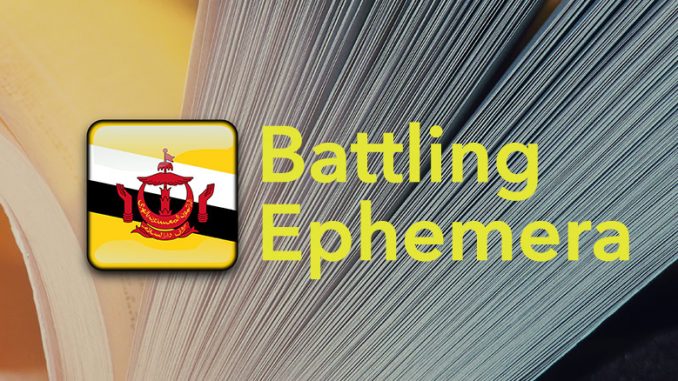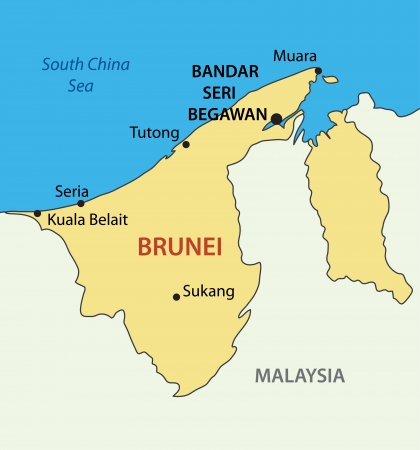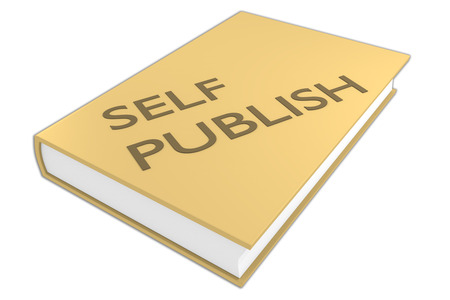
Who is reading Brunei? Who is writing Brunei?
Despite a high adult literacy rate of over 90% (Noor Azam, 2016), the perceived lack of reading culture in Brunei is regularly lamented by educators and government via the Ministry of Education and the National Language and Literature Bureau (DBP). This widespread perception has been the focus of several government initiatives aimed at boosting the reading culture in Brunei, including book fairs, reading carnivals, academic seminars and other public activities. Non-profit grassroots organisations have sprung up with the stated aim of “fostering a stronger reading culture in Brunei”. 1 A national university has run an experimental study to improve the reading habits of undergraduates (Raju, 2014).
There are a handful of small bookstores in the country, which stock primarily British and American bestsellers, usually in category and genre fiction and non-fiction. Pulp Malay language novels from the region are also readily available at stationery shops with fiction sections. There have not been as yet any substantial studies on how the availability of digital reading material – free PDFs online, e-books – or the accessibility to international online bookstores that will ship to Brunei – has affected Bruneian reading habits. Indeed, despite the widespread perception that Bruneians simply “do not read for pleasure” (Nellie, 2012), I have been unable to find any empirical data to support this contention. A national survey on reading culture was reportedly conducted in 2012 by the Prime Minister’s Office – the results of this have not been made public.
Readers breed writers, naturally – lack of readership feeds into a lack of creative production. Low readership correlates to low creative writing production. I have written previously about the nascent but growing state of Anglophone literature in Brunei Darussalam. The table at the end of this article is an updated version of one included in “Comparing Contemporary English and Malay Literature in Brunei: A Comparison” (Kathrina Mohd Daud et al.) in 2016, and is an indicator of just how dormant Bruneian production of literature has been so far. Additionally, with the exception of one anthology of poems published in 1998, the entirety of Bruneian literature in English has been produced after 2009. Of the 8 novelists who have published, only 2, KH Lim and M. Faisal, have been traditionally published – the rest have pursued self-publication; while most of their work is available online through Amazon, some have also made their novels available in print.
The reason for this is of course partially pragmatic – the publishing and editing infrastructure for fiction in Brunei is primarily limited to the National Language and Literature Bureau, which also publishes most of the Malay language literature available. It is not surprising that the limitations of publishing with a government body with its own guidelines, timelines and internal censorship mechanisms are unappealing to writers. Additionally, there is also an inaccurate perception that the National Language and Literature Bureau publishes only Malay works – while the Bureau does run a concerted campaign to ensure that the Malay language remains a priority, it has in fact previously published English-language works, both fiction and non-fiction. To write freely about Brunei, then, Anglophone writers have increasingly turned to self-publishing.
How self-publishing is shaping Bruneian fiction
One of the primary attractions of self-publishing is creative control. The author has complete control over the final product which is released to the public, from cover, to blurb, to content. This has clear advantages when wanting to sidestep the bureaucratic processes involved in publishing within and especially about Brunei.
Four (out of eight) of the English-language novels are explicitly set in Brunei – Amir Falique’s The Forlorn Adventure and B.I.S.A (Vols 1-3), KH Lim’s Written in Black, Aammton Alias’ The Last Bastion of Ingei. 3 of these were self-published; the only one which was not, by KH Lim, was published by a Singaporean publisher.
It should be noted that Malay-language fiction is almost entirely published through either the National Language and Literature Bureau or through other government and regional initiatives, including contests. Unlike their Anglophone counterparts, Malay-language writers have not, for the most part, pursued self-publication. This may partially be due to the recognition that the global marketplace is more welcoming of Anglophone fiction; local translation practices and infrastructure are not as yet well-developed enough to serve this purpose – nor has there yet been enough demand to warrant its development.
Of the Anglophone novels published, both The Forlorn Adventure and Written in Black draw explicitly and implicitly on Western narrative tropes and forms – the former is strongly influenced by save-the-world American blockbuster narratives; the latter a re-working of and homage to Mark Twain’s Huckleberry Finn. Alias’ The Last Bastion of Ingei, perhaps, is the only Anglophone novel set in Brunei to not overtly and recognizably be a replication of a Western narrative trope.
This is not unexpected given the permeation of American and British media in the country, which has historically had significant cultural and linguistic influence in Brunei. Nevertheless, the question arises: given the extreme paucity of Bruneian narratives in fiction, where else can one look to find narratives of Bruneian identity?

Constructing Bruneian-ness
Narratives about Bruneian identity are being shaped in other ways, more ephemeral, easily missed, and yet persistent, for all that. Original bilingual plays written and performed bilingually at the national university and through non-profit grassroots organizations seldom find permanence through publication or repeat performances despite often sold-out shows, and yet these have a wider reach than Malay-language novels published by the National Language and Literature Bureau and seldom read outside of the classroom. One-off comedy shows and performances that take as their premise a shared understanding of Bruneian quirks, and are valuable for the commentary and insight they offer into and run only for a couple of nights, sell out. Art and photography exhibitions are becoming more frequent, but have the same transient quality as live performances.
Unfortunately, few of these performances and therefore narratives about Brunei and Bruneian-anness are recorded in the public memory through publication, critique or review. This means that artists and writers are consistently re-inventing, starting from scratch, lacking narratives other than the national one, than centuries-old classical ones, to resist, subvert, engage with. Indeed, many contemporary artists and writers in the country will have more familiarity and comfort with Western narratives than with classical Bruneian ones – particularly as Anglophone and Malay-language fiction are virtually not in conversation with each other. The nascent and derivative state of Anglophone Bruneian literature begins to make sense – every new creative endeavor is a palimpsest of what has come before, after all.
Exceptions have been made online – the website Songket Alliance, which features Bruneian non-fiction, mostly by young adults, has run now for five years, and draws in a readership per piece of anywhere from 100 to 7000 readers. 2 Nevertheless, there is a precariousness about online mediums – in November 2016, The Brunei Times, one of only two English-language national newspapers in the country, was shut down overnight after having been in operation since 2006. Access to digital archives of ten years of reporting on Brunei was lost – since then, private individuals have worked to reinstate these archives online, but for a few months at least, these were inaccessible, rendering not only the reporting lost, but research and scholarship based on it, impossible to verify.
Another exception has been in the new media of film and TV – there have been 3-4 Bruneian films and numerous made-for-TV scripts – these form a tangible record of Bruneian narratives in TV and film. Very few studies, however, have been conducted on these narratives, and it’s unclear how much they permeate the Bruneian consciousness. Nevertheless, the fact that they are recorded gives scholars and commentators solid ground to work from, at least.

The future of Bruneian narratives: the need for a “critical middle”
Since the shutting down of The Brunei Times, three new media outlets have emerged to fill the void, all of them at least partially founded and manned by ex-Brunei Times journalists. An independent publisher, Heartwrite Co., is working to publish more original Bruneian works, and there are more translations of existing Malay-language Bruneian fiction being conducted for academic and research purposes. Only time will tell how successful these endeavours will be in rooting contemporary Bruneian narratives for artists and writers to look to. I would posit, however, that the future of Bruneian narratives may not be novelistic in form – new media, including film, TV shows, photography and short fiction and non-fiction – will continue to dominate the creative scene. It would be good to be wary of over-valorizing the novel form; instead, studies of Bruneian narratives must observe and understand how local artists and writers are choosing to express their narratives.
At the Singapore Writers Festival in November this year, academic Philip Holden and poet Daryl Lim Wei Jie spoke about the challenge of establishing a “critical middle”, a culture of informed critique that hovers in between academic critique and individual opinions – primarily critical reviews appearing in local media. The critical middle can help not only to shape creative communities, but also provide a public record of ongoing creative production. This critical middle is broader and more immediate than academic critique, with more depth than individual reaction. The development of this critical middle, more than any other endeavor, I believe, will provide needed assurance to local artists and writers that their work is being consumed and reflected on, is being paid attention to, and more importantly, will anchor their work in a genealogy of contemporary Bruneian narratives.
Dr Kathrina Mohd Daud
Lecturer | Creative Writing and English Literature
Faculty of Arts and Social Sciences
Universiti Brunei Darussalam
Anglophone Bruneian texts
| Year of publication | Title | Author | Publisher |
|---|---|---|---|
| Fiction | |||
| 2008 | The Wild Men of the East | Selamat Munap | (Self-published) Raider Publishing |
| 2010 | Crosswise the Boulevard: An Extraordinary Love Saga | M. Faisal | Dewan Bahasa dan Pustaka |
| 2011 | Four Kings | Christopher Sun | Self-published (CreateSpace Independent Publishing Platform) |
| 2013 | The Forlorn Adventure | Amir Falique | (Self-published) Trafford Publishing |
| 2014 | Written in Black | KH Lim | Monsoon Books |
| 2016 | The Last Bastion of Ingei | Aammton Alias | Self-published |
| 2016 | B.I.S.A (Vols 1-3) | B.I.S.A (Vols 1-3) | Self-published |
| 2017 | Jewel: An attempt at a halal romance | Michael Hardy and J.J Gillies | Self-published |
| 2017 | Kris Hellion (Vol 1-2) | Michael Hardy and J.J Gillies | Self-published |
| Drama | |||
| 2012 | In the spotlight: An Anthology of Bruneian plays in English | Ed. Grace VS Chin | Creative Industries Research Cluster, Universiti Brunei Darussalam |
| Poetry | |||
| 1998 | Under the Canopy and Other Poems: English Poetry in Brunei | Ed. Vaughan Rapatahana | Center for British Teachers |
| 2009 | The Swan Scripts | Shai Omarali | Self-published (CreateSpace Independent Publishing Platform) |
| 2009 | Young Dreams | Izzati Jamil | Dewan Bahasa dan Pustaka |
| 2012 | Tribute to Brunei and Other Poems | John Onu Odihi | Trafford Publishing |
| 2013 | Streak of Colour | Winter Frostt | Trafford Publishing |
| 2015 | Moments of Nil | Flora Tavu | Partridge Singapore |
| 2016 | Neruda di Kuala (A Section of Lovers) | Fice KB | La Lectrice Publishing & Printing |
| 2016 | Journey after Young Dreams | Izzati Jamil | Dewan Bahasa dan Pustaka |
Kyoto Review of Southeast Asia, Young Academics Voice, April 2018
References
Kathrina Mohd Daud, Chin, G. V. S., & Maslin Jukim (2016). Contemporary English and Malay literature in Brunei: A comparison. In Noor Azam Haji-Othman, J. McLellan & D. Deterding (Eds.), The use and status of language in Brunei Darussalam: A kingdom of unexpected linguistic diversity (pp. 241–251). Singapore: Springer.
Nellie DPH Sunny. (2012). “Empowering a Reading Culture: A Brunei Darussalam’s Perspective.” TK Conference on Reading, Bangkok 2012.
Noor Azam Othman. (2016). Bilingual education revisited: The role of Ugama Schools in the spread of bilingualism. In Noor Azam Haji-Othman, J. McLellan & D. Deterding (Eds.), The use and status of language in Brunei Darussalam: A kingdom of unexpected linguistic diversity (pp. 253–265). Singapore: Springer.
Raju, Christine Jothy. (2014). “Voluntary Leisure Reading Habits of Undergraduate Students: An Investigation

